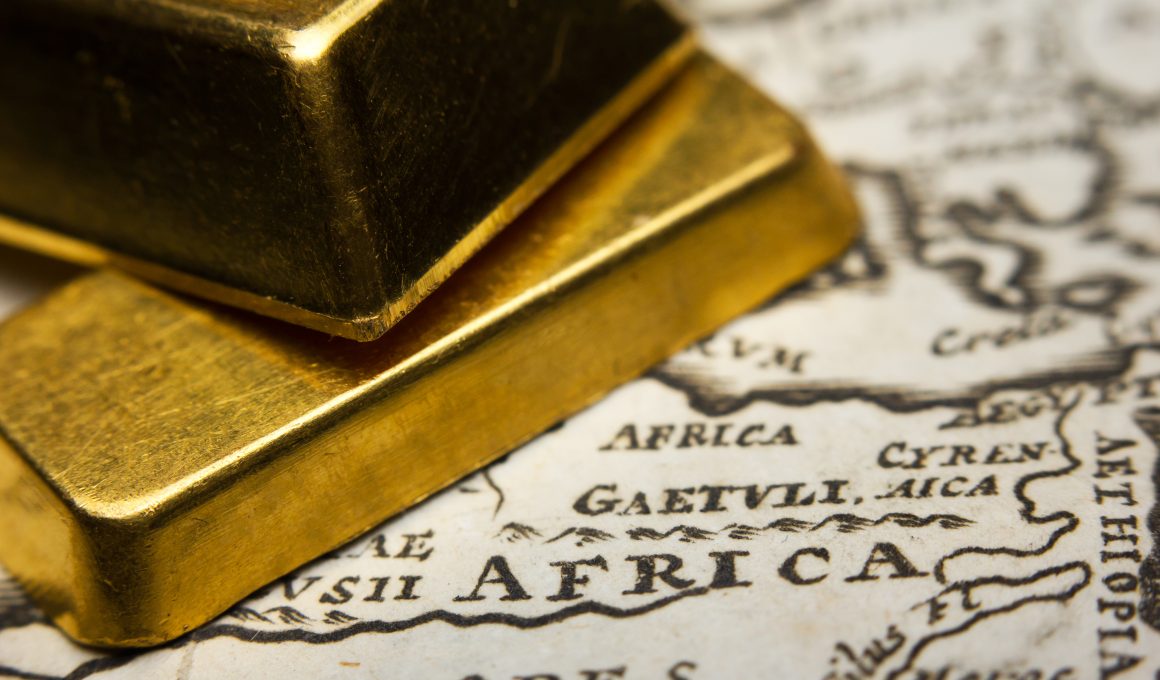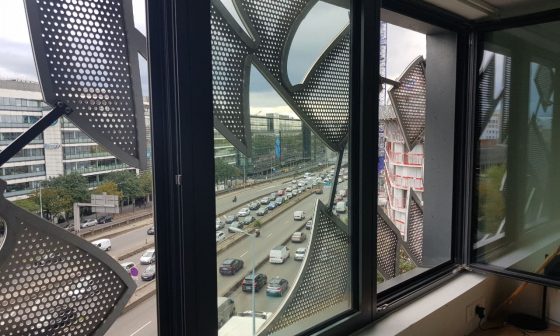We could think of the abundance of resources as a blessing, but history and economics show us it is more a curse. Africa is home to 30% of the world’s mineral reserves and 40% of the world’s gold. Despite the abundance of natural resources, Africa remains one of the poorest continents of the globe. Explaining this paradox shows us the complex reality of the Resource Curse.
In 1997, two American economists Jeffrey Sachs and Andrew Warner made an important observation: countries rich in natural resources tend to perform badly in their economies. It is not only a scattered observation, but a general correlation that is illustrated with a negative relationship between the export of natural resource and the GDP growth per capita. In other words: the more a country exports resources (in percent of its GDP), the lower is its real GDP growth per capita.
As the paper of Sachs and Warner states: “None of the countries with extremely abundant natural resources in 1970 grew rapidly for the next 20 years. Moreover, most of the countries that did grow rapidly during that period started as resource-poor, not resource-rich”.
Many Sub-Saharan African countries have clear indicators showing that they experience the Resource Curse phenomenon. Despite their abundance of oil, diamonds and other precious minerals, the average income in Sub-Saharan African countries such as Angola, Nigeria, and Sudan is low and their health indicators are poor.
Many economists have tried to look for the reasons behind this paradox and debates are still ongoing. Authors state different reasons for this phenomenon and the presented resource curse concept is just one theory. Furthermore, it is not meant to explain the whole economic situation of a country that is way more complex, but it can show us some reasons for the here discussed paradox.
The Dutch Disease
The Dutch Disease designates the situation when a country has an export whose performance on world markets is so strong that it appreciates the real exchange rate of that country and makes it harder to export other goods and services. This phenomenon is called the Dutch Disease because, at least supposedly, the Dutch suffered from this problem in the 1960s after a major discovery of natural gas.
We could think that it might be a good thing to have a really strong exporting sector, but a strong exchange rate will make it harder for that country to have other competitive export industries. The economy relies entirely on scarce resources, and when these latter run out or when they are not controlled efficiently, the country is left with only a small industrial sector.
Linking the Dutch Disease to the Resource Curse, we can observe that some countries with high levels of scarce resources were not able to diversify their economy as much as they should have, relying on the one single strong commodity doing well on world markets. The overall economy can de-industrialize, further intensifying the dependence on natural capital. Therefore, in most African countries, natural capital accounts for between 30% and 50% of total wealth. It can also inhibit the growth of human capital as the workforce is employed in low-skilled manual labor (mining).
“One of the surprising features of modern economic growth is that economies with abundant natural resources have tended to grow less rapidly than natural-resource scarce economies”
Natural Resource Abundance and Economic Growth, Jeffrey D. Sachs & Andrew M. Warner
Democratic Republic of Congo (DRC) is an example of such a strong connection: More than 90% of its exports are raw materials (minerals and oil) out of which 40% are to China, making its economy highly dependent on both the evolution of the commodity cycle and Chinese demand.
The DRC’s highly specialized economy remains vulnerable
Democratic Republic of Congo’s economy reflects the phenomenon of the Natural Resource Curse. The country is considered to be a real “geological scandal” because of its very rich subsoil, full of mineral resources (as being the largest producer of copper in Africa, the world’s largest producer of cobalt; having coltan, gold, diamonds). Yet, the DRC is the 8th poorest country in the world and has not met any of the UN Millennium Development Goals. With a 2018 GDP of $48.46 billion, or $496 per capita, its development indicators are lagging far behind UN objectives. While the poverty rate has improved from 71.4% in 2005 to 63.4% in 2012, the DRC has made no progress in its global Human Development Index (HDI) ranking of 176th out of 188 countries in 2018, which remains below the average for Sub-Saharan Africa. This leads to other issues impacting the economic development of the country.
Civil wars and conflicts
A country rich in high-value resources is more likely to have civil wars and conflicts to take control over those minerals. In Congo, Angola and Sudan, conflicts are at least partly related to resources.
In addition to being at the source of conflicts in order to take control of them, high-value resources are used to finance militias and weapons, from the money they get by selling them to multinationals. The United Nations Environment Program (UNEP) shows that withinside the last 60 years, at least 40% of all intrastate conflicts have a connection to natural resources. According to the UNEP, since 1990, at least “18 violent conflicts were fueled through the exploitation of mineral assets, like timber, diamonds, gold, minerals, and oil, or ones like fertile land and water”. Civil wars have endless negative consequences, and one of which is to delay economic development, as they lead to wasted resources, use of the labor factor in unproductive activity, and shrike foreign investment. The link between natural resources and civil wars is not direct, as conflicts appear more predominantly with unstable governments. Yet, mineral wealth may worsen institutions as it strengthens the political and economic power of dictators, as it raises the value of being in power and induces politicians to expand the public sector, to bribe voters, and to lack transparency…
Weak Institutions
Putting labor and capital into one single major commodity also leads to a problem with the income distribution. A natural resource owned by a relatively small number of individuals or by a government and that this is not spreading into a more general middle-class prosperity. Natural resources rent may crowd-out any other profitable investment and activity, as education, institutions that are not immediately rent-seeking activities.
While many countries that are rich in resources have shown signs of the Resource Curse, the concepts has limits. First of all, the phenomenon is not homogeneous. Countries such as Norway and Canada, very rich in natural resources, have shown extremely good economic performance. Reasons to explain these exceptions are numerous. For Norway, it is said that the country discovered oil when the population already had a functioning representative democracy with strong institutions. That way, oil revenue could be redistributed efficiently to citizens. Norway is also focused on exchange rate stability, avoiding the so called “Dutch Disease”. In the second place, the concept of Resource Curse is just one explanation of the paradoxon of resources and poverty.
Limits of the concept
Talking about African countries, we have to highlight the effect of colonialism on the economic growth of the colonialised countries. European countries exploited natural resources of African soils during centuries, generating a lot of wealth without redistributing the revenue to the population. The primary sector developed during these times, where the local labour force was exploited to extract resources, which were then shipped to Europe. Now, former African colonies struggle to diversify their economy, one of the results of European hegemony on resources. Furthermore, the Resource Curse theory considers instability of political systems and civil wars as one consequence of resources and as one reason for badly performing economies. However, the instability of political systems has more complicated reasons, part of which we can also find in the history of colonialism.
Finally, colonialists were highly interested in resources which we might, in some other way than Sachs and Warner, think of as another kind of a resource curse.
To go further: How Europe Underdeveloped Africa by Walter Rodney (1972)
Land of Tears: The Exploration and Exploitation of Equatorial Africa by Robert W. Harms (2020)






